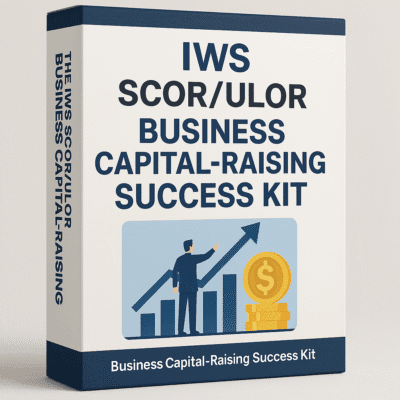The Visionary Mind of James Ling: A Blueprint for Modern Business Builders in Mergers and Acquisitions
James Ling is a name less known today but was once synonymous with one of the most ambitious and innovative business growth strategies in the corporate world. Born in 1922 in the small town of Hugo, Oklahoma, and raised in Dallas, Texas, Ling started his professional life not as a mogul but as an electrician’s helper. By the late 1960s, however, he was the head of Ling-Temco-Vought (LTV), a conglomerate that represented what was possible when relentless ambition met a forward-thinking approach to mergers and acquisitions (M&A).
Ling’s visionary tactics and strategies, while sometimes considered risky or even reckless, provided a blueprint for the art of leveraging public offerings, acquisitions, and mergers to create a sprawling business empire. He understood the latent power of M&A long before the conglomerate boom of the 1980s. His strategies continue to offer invaluable insights for today’s entrepreneurs and business builders, particularly those focused on scaling their ventures through acquisitions and public funding.
The Genesis of Ling’s Conglomerate: Vision Beyond Traditional Business
In the 1950s, James Ling founded Ling Electric Company, a small operation that focused on electrical contracting. But his vision was far beyond running a small business. Ling, from the beginning, thought about how he could leverage the broader financial mechanisms to grow his enterprise. His philosophy was not about building a single business but about building an interconnected web of businesses that could support one another.
Ling quickly expanded by reinvesting profits from his initial contracts into other ventures, acquiring smaller businesses that allowed him to create synergies across operations. This was well before the term “synergy” had become a corporate buzzword, yet Ling’s conglomerate strategy was all about achieving operational efficiencies, diversifying revenue streams, and capturing different market segments under one corporate umbrella.
By the mid-1950s, Ling’s company had transformed into Ling-Altec Electronics after acquiring Altec, an audio equipment manufacturer. The idea was simple yet revolutionary: by acquiring complementary businesses, he could reduce costs, diversify risk, and create value for shareholders. This became the foundation of his empire, setting a pattern he would follow for years to come.
K-36 : The IWS SCOR/ULOR Business Capital-Raising Success Kit
The complete SCOR/ULOR capital-raising system. Learn how to raise up to $1M a year for your corporation with no repayment, using small company offering registration. Includes step-by-step instructions, official forms in PDF, broker & lender directories, and 5 bonus guides to secure investors and fund your business fast.
Taking LTV Public: The Early Vision of Leveraging Public Equity
Taking his company public was one of Ling’s first major gambles—a gamble that would redefine the way he conducted business. In 1961, Ling issued shares for the company, which was then renamed Ling-Temco-Vought, merging with Temco Aircraft and Vought, a major aerospace and defense contractor. This strategic merger was about more than just adding new revenue streams; it also leveraged public equity to raise capital for further expansion.
Ling understood that access to public capital markets would allow him to fund ambitious acquisition plans without constantly relying on debt. This was a novel concept in an era when most businesses were still funded by private capital or conservative bank loans. The IPO gave Ling the financial muscle to target and acquire companies that were much larger than his own, catapulting LTV into the ranks of major American corporations.
For business builders today, Ling’s approach underscores a critical lesson: a well-timed public offering can serve as a powerful catalyst for growth. It provides not only funding but also public credibility and market validation, both of which can open doors to future acquisition opportunities.
A New Kind of Acquirer: The Birth of the Modern Conglomerate
Ling’s approach to acquisitions was pioneering, particularly in his creation of what we now call a conglomerate. A conglomerate, in business terms, is a large corporation that consists of diverse companies operating in different industries. Today, companies like Berkshire Hathaway and Alphabet embody this model, but Ling was among the first to actively build a multi-industry giant through aggressive M&A tactics.
Ling’s acquisitions spanned an array of industries: aerospace, electronics, defense, and even meatpacking. He was known for targeting companies with steady cash flows, such as Braniff Airlines and Wilson & Co., a meatpacking business. His acquisition strategy was characterized by thorough research and due diligence, ensuring that every acquired company brought some form of operational or financial synergy to the table.
By following this model, Ling effectively created a hedge against economic downturns in any single industry. If aerospace faced a downturn, the electronics or meatpacking divisions could stabilize earnings. This diversification strategy allowed LTV to weather economic storms that could have otherwise sunk a single-industry company.
For today’s business leaders, the conglomerate model demonstrates the value of creating a diversified revenue portfolio. While some argue that conglomerates have fallen out of favor, with businesses opting instead for “focus” strategies, the underlying principle of balancing income streams from multiple sources remains relevant. Building resilience into a business through acquisitions and diversification can be a significant competitive advantage, particularly in unpredictable markets.
K-40 : The IWS Complete Business Plan Kit
The IWS Business Plan Kit gives you everything you need to write professional business plans that secure funding and impress investors. Turn your ideas into fully funded ventures with The IWS Complete Business Plan Kit. This powerful package gives you professional templates, step-by-step guidance, and multiple real-world examples to help you write winning business plans for any industry or project. Inside, you’ll find fill-in-the-blank forms, proven outlines, and directories of potential funding sources so you can move from concept to capital quickly. Whether you’re launching a startup, expanding an existing business, or seeking financing for real estate investments, this kit…
The Role of Financial Innovation: Leveraging the Holding Company Structure
One of Ling’s most innovative financial moves was the establishment of a holding company structure, which allowed him to retain majority ownership while acquiring substantial stakes in other companies. This structure not only minimized the tax burden but also provided flexibility in managing the conglomerate. Ling could buy or sell companies with relative ease, taking advantage of opportunities as they arose without over-leveraging any single entity.
The holding company model also allowed Ling to shield the core business from the risks associated with each new acquisition. If one subsidiary underperformed, it would not jeopardize the financial health of the entire conglomerate. This level of financial agility was crucial to Ling’s rapid expansion, as it minimized the risk of financial collapse and allowed him to capitalize on opportunities as they emerged.
For modern entrepreneurs, this lesson is clear: structuring a business in a way that allows for flexibility and risk management is crucial when pursuing aggressive growth. A holding company structure, or some variation of it, can be an effective tool for those aiming to grow through acquisitions without exposing the entire enterprise to the risks inherent in each individual deal.
Overcoming Challenges: Ling’s Downfall and Lessons Learned
Ling’s empire did not last forever. By the early 1970s, LTV had become financially overextended, burdened with debt from its many acquisitions. The conglomerate’s complex structure became challenging to manage, and when the U.S. economy entered a recession, LTV’s stock price plummeted. Ling was ultimately ousted from his own company, and LTV was forced to divest several of its assets to pay off creditors.
This downfall was a cautionary tale in the perils of over-leveraging and the need for financial prudence. Ling’s story underscores that while acquisitions can be a powerful growth tool, they must be pursued strategically and responsibly. Accumulating too much debt can make even the most profitable businesses vulnerable to economic downturns or shifts in market conditions.
Today’s entrepreneurs can draw several critical lessons from this chapter of Ling’s story. First, while access to capital markets can fuel growth, it’s essential to maintain a balanced capital structure. Ling’s approach was aggressive, but his debt reliance ultimately became unsustainable. Business builders should ensure they have sufficient cash flow and resources to service their debt obligations, especially if pursuing a rapid expansion.
IWS-205 : Tyler G. Hicks’ Wealth Creation Vault
100+ Real-World Ideas and Strategies to Start and Grow Your Own Profitable Business An Amazon #1 Best Seller! Your ultimate guide to building lasting wealth through powerful, practical, and proven methods. As the first new release from International Wealth Success (IWS) Press, this groundbreaking book brings together a lifetime of insights from a wealth-building icon, transforming them into actionable steps for entrepreneurs at every stage of their journey.
The Ling Legacy: What Modern Business Builders Can Take Away
Despite his eventual downfall, James Ling’s impact on corporate America remains profound. He pioneered several concepts in business expansion that are now standard practices in the world of M&A and conglomerate management. Here are some timeless lessons that business builders can glean from Ling’s story:
- Embrace Financial Innovation: Ling’s use of holding companies, public offerings, and stock to fuel growth offers a template for modern businesses looking to scale. Understanding the mechanics of financial markets and creative corporate structures can empower businesses to grow strategically and sustainably.
- Strategic Acquisition for Synergy and Diversification: Ling’s method of targeting businesses that provided either operational or financial synergies is a masterclass in thoughtful acquisition. Entrepreneurs should look for acquisitions that strengthen their core operations or provide diversified income streams.
- Adaptability and Risk Management: Ling’s structure enabled LTV to operate flexibly across various sectors, which insulated it from market fluctuations. Business builders can benefit by adopting a diversified approach, allowing them to manage risks and adapt to changing conditions.
- The Limits of Growth: Ling’s story is a reminder that even the most ambitious growth strategies must be tempered with caution. Rapid expansion is achievable, but only with a disciplined approach to financing and a careful balance of debt and equity.
James Ling’s life and career provide a rare view into the mind of a true business innovator. He was bold, imaginative, and fearless in his approach to corporate growth—a mindset that today’s entrepreneurs would do well to emulate. His achievements, along with the cautionary tale of his downfall, create a lasting blueprint for how visionary leaders can approach growth in a world where mergers and acquisitions have become essential components of business success.








